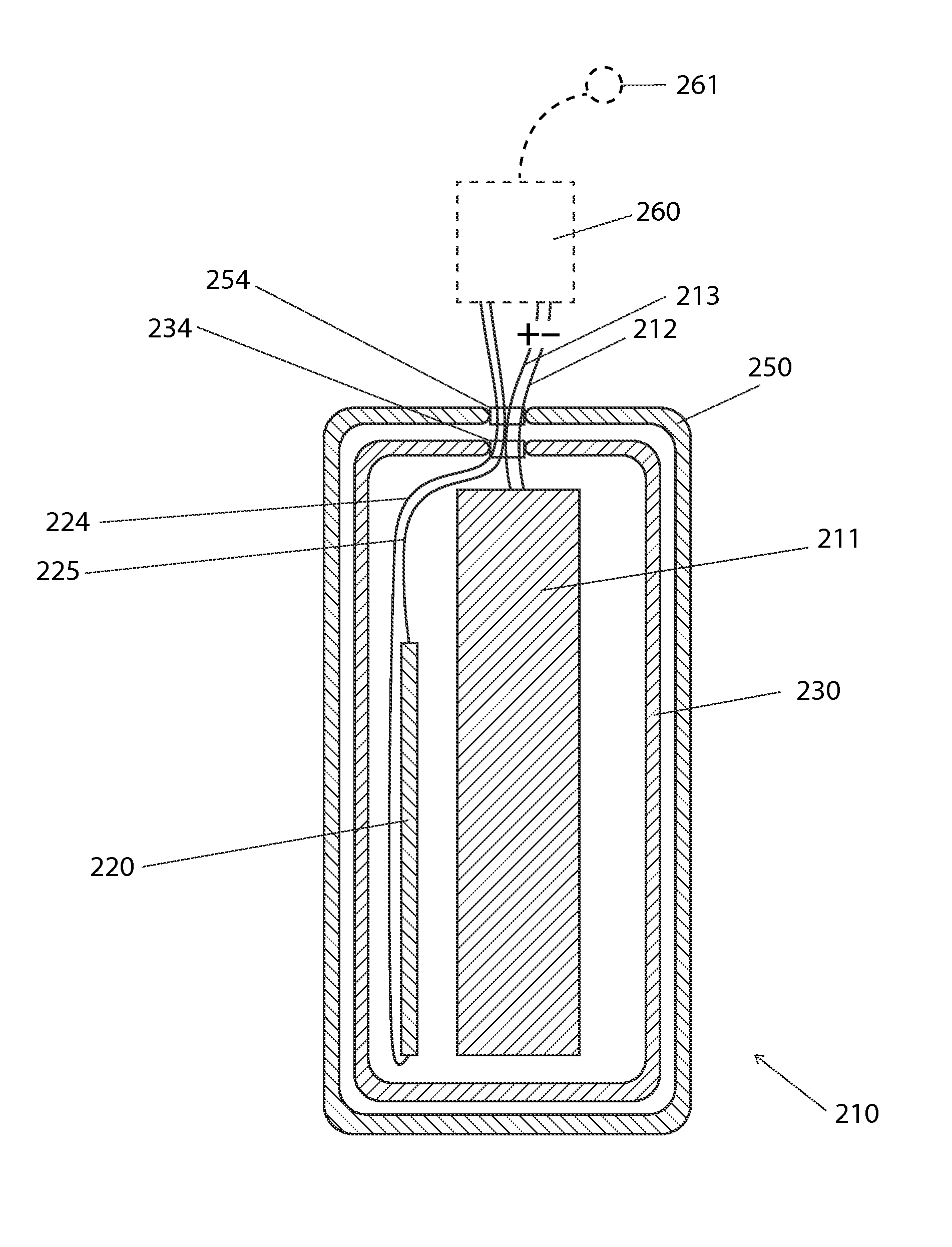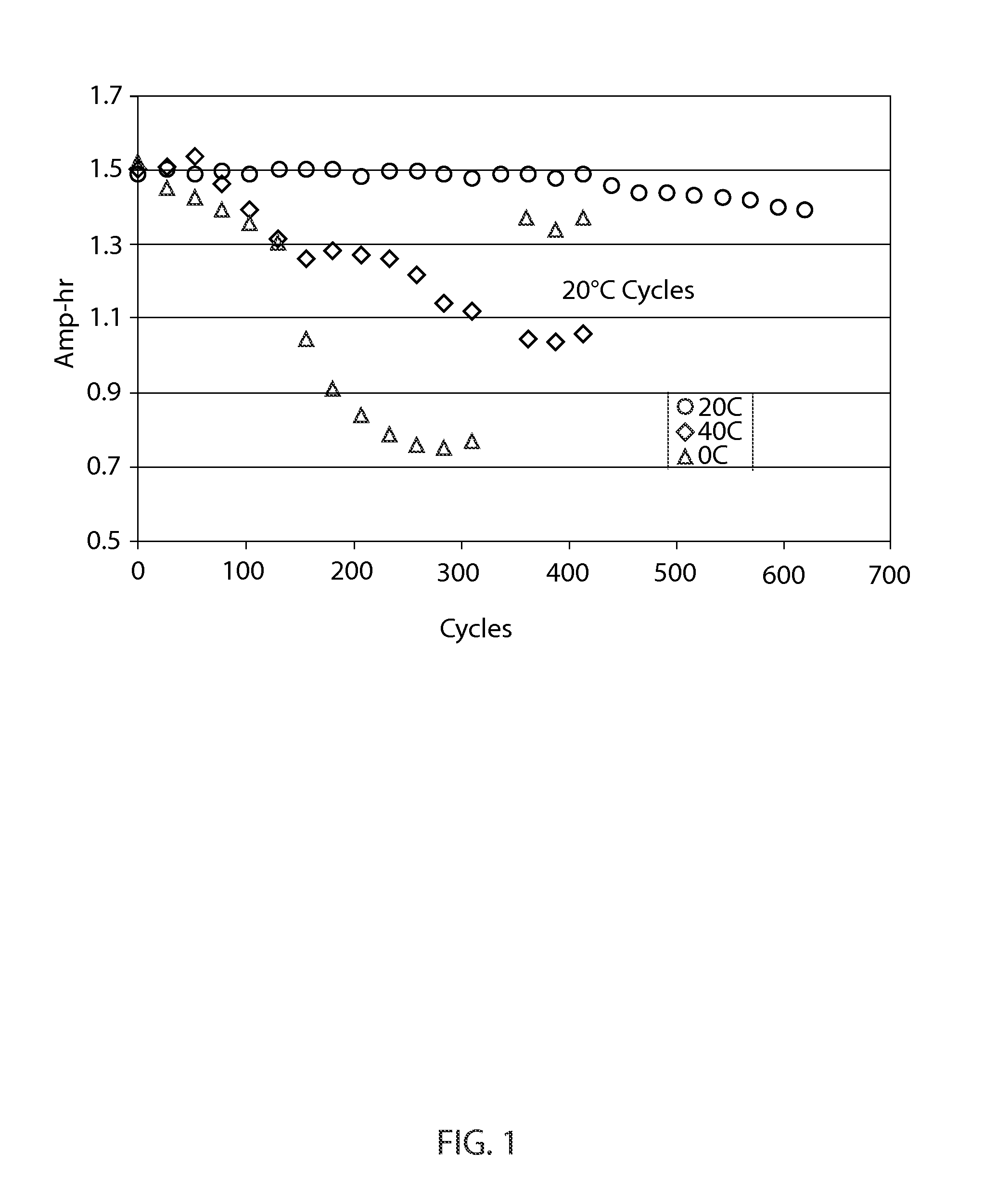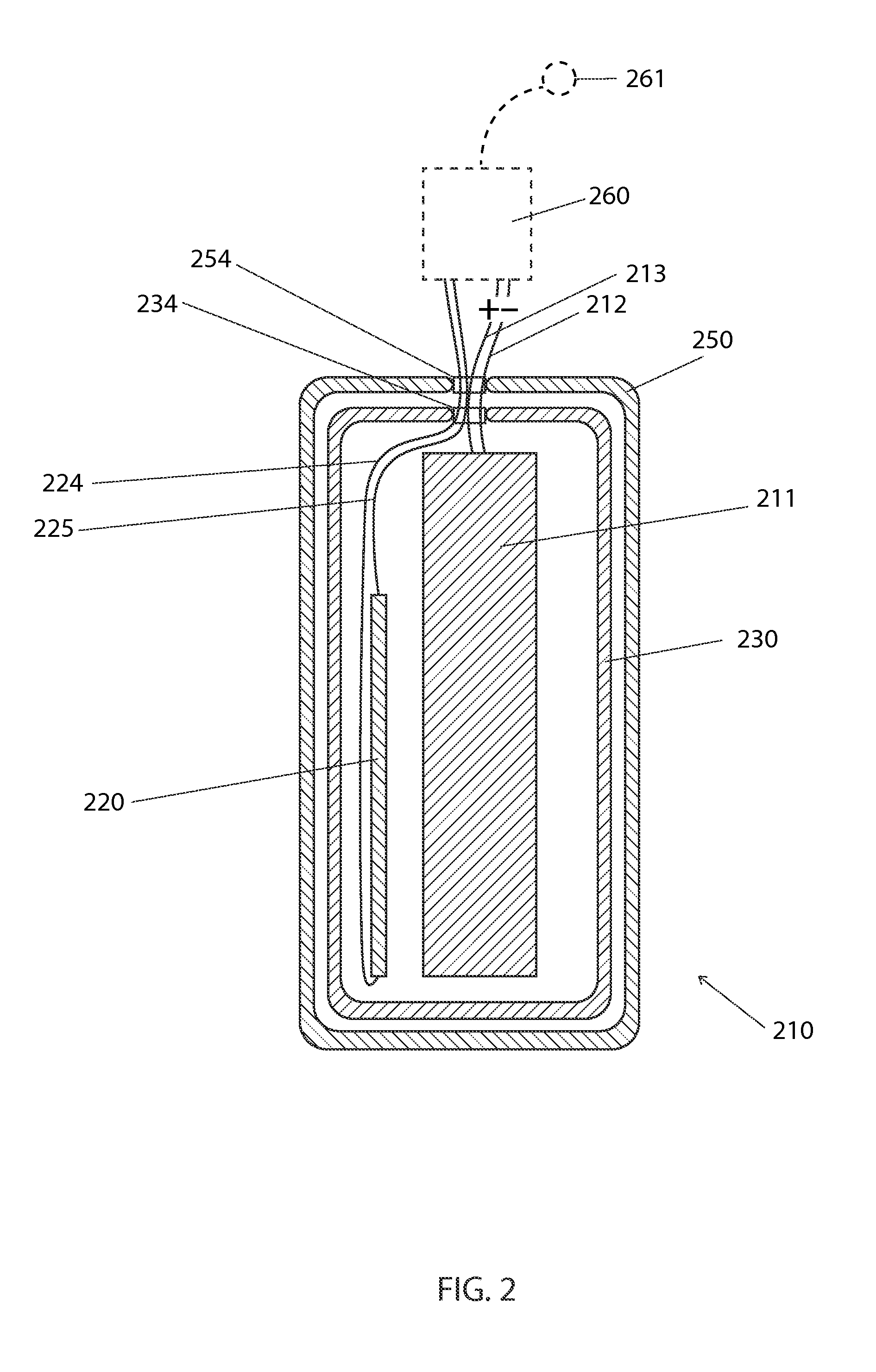Thermally-protected chemical-cell battery system
a chemical cell battery and thermal protection technology, applied in secondary cell servicing/maintenance, batteries, electrochemical generators, etc., can solve the problems of reducing the amp-hour capacity and charge cycle performance of chemical cell batteries during use, adverse effects on the operation and charging of certain battery systems, and affecting the mobility of ions, etc., to achieve efficient heating of both batteries, prolong battery activation times, and increase battery power
- Summary
- Abstract
- Description
- Claims
- Application Information
AI Technical Summary
Benefits of technology
Problems solved by technology
Method used
Image
Examples
Embodiment Construction
[0050]Referring now to FIGS. 2-6, various embodiments of the invention are shown comprising a thermally-protected heatable chemical cell battery system for use in supplying power to an electronic device such as: a cell phone, a handheld GPS unit, a tablet, a computing device, a heated goggle, a heated visor, etc.
[0051]Referring specifically to FIG. 2, there is shown a thermally-protected chemical cell battery system 210 in accordance with an embodiment of the invention. The thermally-protected chemical cell battery system 210 comprises a chemical cell battery 211, such as a rechargeable lithium-ion battery, a lithium-poly battery, or other chemical cell battery such as would be adversely affected by extreme temperature operating conditions. Preferably, the thermally-protected chemical cell battery system 210 further comprises a heating element 220 which may be comprised of a metal core covered with a thin film heating material, such as an indium tin oxide coating, or a silver nano-w...
PUM
| Property | Measurement | Unit |
|---|---|---|
| temperature | aaaaa | aaaaa |
| temperatures | aaaaa | aaaaa |
| temperature | aaaaa | aaaaa |
Abstract
Description
Claims
Application Information
 Login to View More
Login to View More - R&D
- Intellectual Property
- Life Sciences
- Materials
- Tech Scout
- Unparalleled Data Quality
- Higher Quality Content
- 60% Fewer Hallucinations
Browse by: Latest US Patents, China's latest patents, Technical Efficacy Thesaurus, Application Domain, Technology Topic, Popular Technical Reports.
© 2025 PatSnap. All rights reserved.Legal|Privacy policy|Modern Slavery Act Transparency Statement|Sitemap|About US| Contact US: help@patsnap.com



